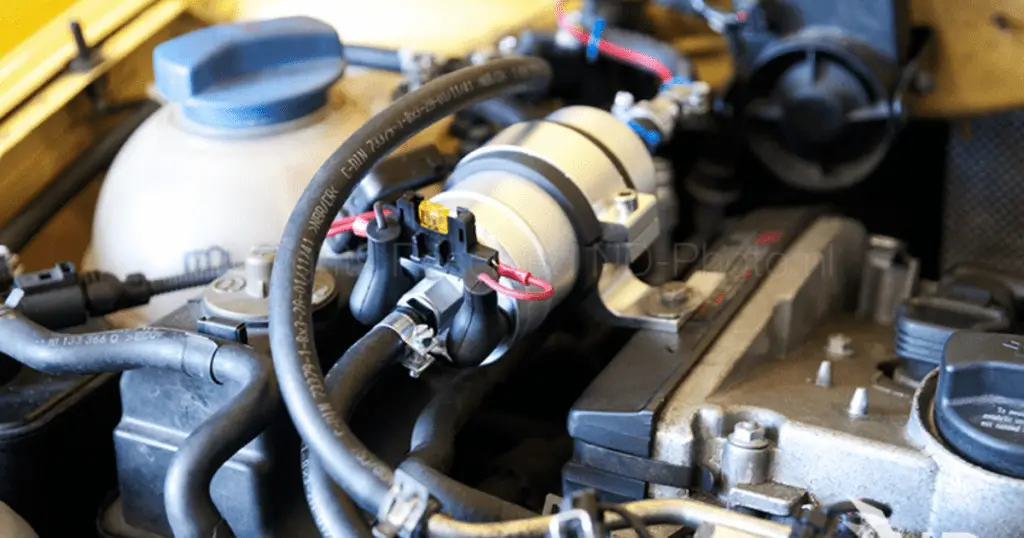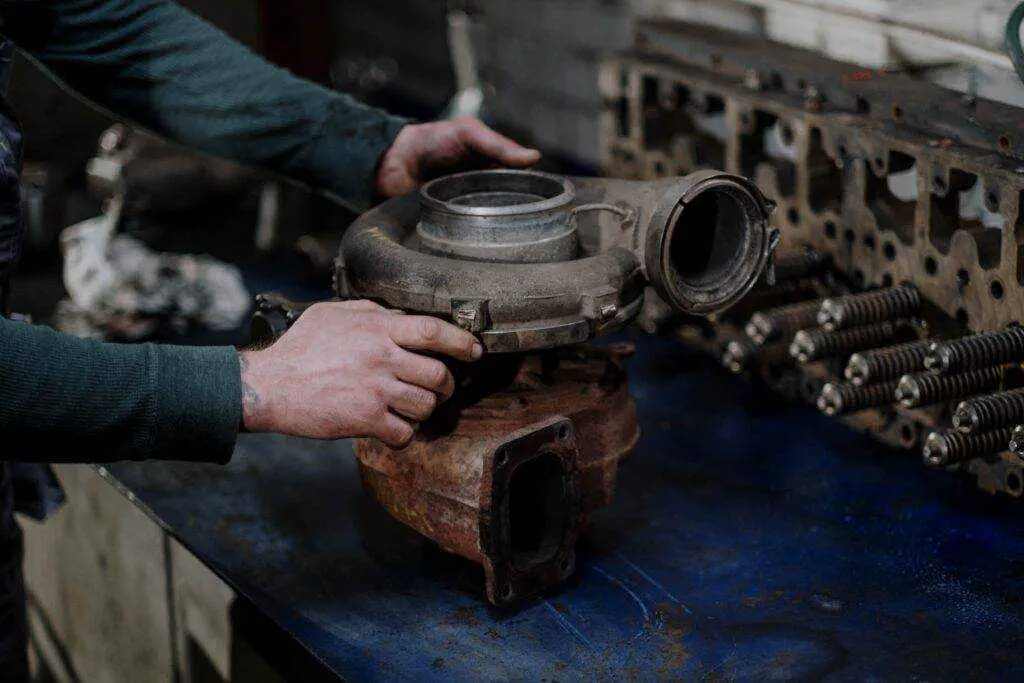Your vehicle’s fuel pump is a crucial component that delivers gasoline from the fuel tank to the engine. Without a properly functioning fuel pump, your car or truck won’t run.
But How do Know if My Fuel Pump is Bad? Many drivers aren’t familiar with the warning signs of fuel pump problems, which can lead to being stranded when the pump eventually dies.
This comprehensive guide will cover everything you need to know about identifying bad fuel pump symptoms, understanding why pumps fail, and finding solutions to get your ride up and running again.
What Does a Fuel Pump Do?
Before jumping into the signs of a bad pump, let’s quickly review the fuel pump’s role in your vehicle’s operation.
How to Know if My Fuel Pump is Bad? The fuel pump’s job is to draw fuel from the gas tank and transfer it to the engine at the required pressure. It delivers a steady supply of pressurized fuel even as engine speed and demand varies.
In a modern fuel-injected vehicle, the pump moves gasoline through fuel lines and a filter before arriving at the fuel rail to be distributed to the injectors. Older carbureted vehicles mix fuel and air in the carburetor before entering the intake manifold.
An electric fuel pump is operated by a motor powered by your car’s electrical system. The pump is activated when the ignition key is turned on. It will run for a few seconds to build pressure even if the engine isn’t cranking.
Mechanical fuel pumps found in older vehicles are operated by the camshaft. As the camshaft rotates, an arm attached to a diaphragm pumps the fuel.
How to Know if My Fuel Pump is Bad? Symptoms of fuel pump problems will be the same whether the pump is electric or mechanical. Next, we’ll explore the top signs that your pump is failing.
Symptoms of a Failing Fuel Pump
How to Know if My Fuel Pump is Bad? Watch out for these common indicators that your fuel pump may be going bad:
1. Difficulty Starting
One of the first symptoms of a bad fuel pump is trouble starting your vehicle. A weak pump doesn’t generate enough fuel pressure to start the engine. You may notice the engine cranking over but not firing up like it should.
How to Know if My Fuel Pump is Bad? The car may start fine but take more cranks of the starter than normal. Or you might need to give some extra throttle to keep it from stalling once started.
2. Engine Sputtering
Does your car run fine after starting but then start to sputter and hesitate once up to speed? How to Know if My Fuel Pump is Bad? This sporadic stumbling indicates the fuel pump can’t deliver a steady supply of fuel at the required pressure.
Accelerating, going uphill, or carrying extra weight puts more load on the engine, increasing its fuel demand. The pump may keep up at idle but not under strain.
Sputtering could also be caused by a clogged fuel filter, bad fuel pressure regulator, or malfunctioning sensors. But often the fuel pump is the culprit.
3. Loss of Power
You might notice your engine feels like it’s lost power, similar to the sputtering symptom. The engine may bog down while cruising on the highway or struggle when passing other vehicles.
Insufficient fuel supply will make the motor feel anemic. The fuel mixture ends up too lean (not enough gas relative to air), robbing your ride of its normal torque and horsepower.
4. Engine Stalling
One of the most serious symptoms of a failing fuel pump is a complete engine stall. If the pump can’t supply the engine with enough fuel, the motor will cut out altogether.
Stalling is most likely to occur at higher speeds, under heavy acceleration, going uphill, or hauling a trailer. Increased load demands more fuel, overwhelming an already weak pump.
The engine may restart after stalling, but expect it to keep occurring until the pump is repaired. Getting stranded on the roadside is a very real possibility.
5. Decreased Fuel Efficiency
Have you noticed your gas mileage has dropped recently? A fuel pump problem can decrease fuel economy in a couple of ways.
First, the engine has to work harder to compensate for insufficient fuel pressure. Burning extra gas lowers MPG.
How to Know if My Fuel Pump is Bad? A bad pump may also leak fuel back into the tank through the return line. This recycling wastes gas, again decreasing miles per gallon.
6. Whining Noise from Fuel Tank
Listen for an abnormal whining or buzzing noise coming from the fuel tank area, especially when the engine is running. This noise indicates cavitation from a failing pump.
Cavitation happens when vapor pockets form inside the pump from insufficient fuel. The pump can’t build normal pressure. Correcting the underlying issues will eliminate the noise.
7. Check Engine Light
Your check engine light provides an early warning of possible fuel pump problems before performance issues occur. Diagnostic trouble codes stored in the vehicle computer can point to low fuel pressure.
How to Know if My Fuel Pump is Bad? Pay attention to fuel-related codes like P0087 (fuel rail pressure too low) and P0182 (system low fuel pressure). Have the codes scanned at your repair shop and inspected if found.
Heeding the check engine light right away prevents bigger headaches down the road. The fuel pump may still be salvaged if caught early.
What Causes a Fuel Pump to Fail?
Now that you know how to identify fuel pump failure symptoms, what causes them to go bad in the first place? Here are some of the most common reasons fuel pumps fail:
- Old age: Fuel pumps have a finite lifespan like any auto part and can wear out over time. Most last 100,000-200,000 miles. Internal bearings, bushings, and seals eventually fatigue.
- Overheating: Pump motors and windings can overheat from low fuel levels, a clogged filter, or a high current draw. Heat damages the coil windings.
- Electrical spikes: Voltage spikes from a failing alternator or battery can fry the pump motor. The thin windings are very sensitive to current spikes.
- Corrosion: Rust particles inside the tank that get sucked into the pump gradually erode impellers and housings. Gasoline is an excellent solvent that promotes corrosion.
- Cavitation: Forming of vapor bubbles in the pump from restricted fuel flow damages internal components. The bubbles collapse violently, essentially blasting surfaces.
- Debris ingestion: Contaminants like dirt, rust flakes, and rubber seals getting sucked into the pump eventually jam it up. Impellers get damaged.
- Fuel contamination: Bad gasoline containing water or too much alcohol can gel up or corrode fuel system components.
How to Know if My Fuel Pump is Bad? With age and mileage being the number one causes of fuel pump failure, periodic replacement is needed to avoid being left on the roadside. Next, we’ll go over some solutions to remedy bad fuel pump issues.
What to Do When Your Fuel Pump is Failing
How to know if my fuel pump is bad? If you suspect fuel pump problems based on the symptoms outlined earlier, here are some tips on steps to take:
Confirm the Failure
The first thing to do is confirm the fuel pump is the root cause. There are some simple checks you can perform yourself, which we’ll cover shortly.
If the tests indicate fuel delivery issues, best to have your repair shop do a professional diagnosis. They have the tools to test pump operation and fuel pressure properly.
Don’t throw parts at it without verifying the pump is bad. Replacing the pump is expensive. And there could be another culprit behind the symptoms.
Perform a Fuel Pressure Test
The most definitive check is to connect a fuel pressure gauge and verify you’re getting proper system pressure. But not everyone has a gauge handy.
Here are some simpler fuel pump tests you can do in your driveway:
- Turn the key to the ON position without cranking. The pump should run for a few seconds to pressurize the system. Repeat 3-4 times. Difficulty building pressure indicates a bad pump.
- With the engine off, remove a fuel line from the fuel rail. Turn the ignition ON and look for a steady fuel flow. Sporadic flow points to pump troubles.
- Check for voltage at the pump connector with the key ON. No voltage means the electrical circuit is faulty. 12 volts confirms pump failure.
- Remove the fuel filler cap with the engine running. A sudden change in idle signals a fuel system leak drawing in the air.
How to Know if My Fuel Pump is Bad? These tests help isolate the issue before buying parts. If you’re mechanically inclined, you can replace the fuel pump yourself. Or have a professional handle the repair.
Replace the Fuel Pump
Replacing a worn-out fuel pump is the ultimate fix for persistent fuel delivery issues. DIY replacement is possible but challenging on some vehicle designs. Many pumps require dropping the fuel tank to access them.

Use a new OEM pump from a reputable supplier, not a cheap knockoff. Also, replace the strainer filter inside the tank when doing the job. Debris from the old pump can damage a new one. Consider replacing the fuel filter outside the tank as well.
Be extremely careful when dealing with gasoline. Make sure to relieve fuel system pressure before disconnecting any fuel lines.
Replacing the pump and filter restores proper fuel pressure and volume to the engine. Your ride will regain its lost power and hopefully get back to peak fuel economy.
Repair Related Electrical Issues
Sometimes electrical problems can mimic fuel pump failure. Perform voltage checks on pump circuits and ground connections to confirm they’re sound.
Faulty wiring, relays, fuses, and connections will prevent sufficient current from reaching the pump. Tracing and repairing electrical gremlins may bring the pump back to life.
Switch Fuels
If contaminated or bad fuel damages the pump, completely flush the tank and fuel system after installing a new one. Switching to a higher-grade gasoline can help clean out deposits. Consider adding a fuel system cleaner on your next fill-up.
Depending on how badly components are contaminated, a professional deep fuel system cleaning service may be required. This pumps cleaning chemicals through the entire system to remove buildup.
Install an External Pump
For older vehicles with mechanical pumps, consider adding an external electric pump as a backup. Mount it close to the tank outlet. It can get you home or to the shop if your mechanical pump dies.
External pumps are handy spare pumps to keep on hand for emergencies too. They can temporarily restore fuel pressure to limp the car to a repair facility.
FAQ How to Know if My Fuel Pump is Bad:
Still, have some burning fuel pump questions? Here are answers to some frequently asked queries about diagnosing and fixing bad pump issues.
What are the signs of a bad fuel pump?
Difficult starting, sputtering at speed, loss of power, stalling, reduced fuel economy, whining noise, check engine light – these are the most common signs of a failing fuel pump.
Severe enough fuel delivery issues will cause a no-start condition. Catching problems early based on drivability symptoms and diagnostic codes can allow pump replacement before being stranded.
How do you test a fuel pump?
Use a fuel pressure test gauge to get quantitative pressure readings and verify pump performance. Do basic checks like priming the pump and checking for steady fuel flow to get qualitative indications of possible failure.
Voltage tests determine if electrical power is reaching the pump. Removing the gas cap checks for vapor leaks that could simulate fuel starvation.
Can a fuel pump fail suddenly?
Most fuel pump failures occur gradually over time as internal parts wear out. But fuel pumps can also fail suddenly if something causes the motor windings or internal bearings to become severely damaged.
Potential causes of sudden failure include overheating, ingesting debris, or electrical spikes frying the circuits. Reduced fuel levels and contaminated fuel may precipitate abrupt failures.
Do fuel pumps fail without warning?
Fuel pumps don’t always gradually decline. They can quit unexpectedly if a damaged impeller shaft or bearing seizes up. But the symptoms leading up to complete failure do provide a warning.
Noticing drivability issues, noises, and trouble codes related to fuel delivery is a tip-off that pump problems are brewing. Heeding those warnings gives you a chance to replace the pump before it leaves you stranded.
Can the fuel pump be repaired?
You cannot repair fuel pumps, only replace them. All the intricate internal components like bearings, bushings, brushes, and electromagnets cannot be serviced individually. It’s impossible to disassemble and rebuild them.
Trying to open up a sealed pump assembly just introduces external contamination that will quickly ruin the new pump once installed. Just swap in a replacement pump when yours fails.
How do I know if I need a new fuel pump?
Here are definitive signs you need a new fuel pump:
- Your vehicle isn’t starting or frequently stalls, and you’ve confirmed fuel delivery issues through testing.
- A fuel pressure gauge shows system pressure outside the factory specification range.
- You have documented drivability complaints related to fuel starvation. Trouble codes point directly at a faulty pump.
- The pump is making audible high-pitched whining or buzzing noises from cavitation.
- Inspection reveals an external leak, bent connector pins, or burnt electrical connector indicating pump damage.
How to Know if My Fuel Pump is Bad? Hopefully, these fuel pump troubleshooting tips will help you identify and prevent problems with this integral system component. Catching minor problems early can help avoid an expensive roadside breakdown.
Stay vigilant for fuel pump failure warning signs and listen to what your engine is telling you. Schedule a preventive maintenance check anytime you suspect fuel delivery issues. Your technician has the tools to diagnose hard-to-detect problems that you can only guess at.
With a properly operating fuel system, your ride will have the responsive acceleration and solid performance you expect. Don’t take your fuel pump for granted – check it over regularly as engines count on it!





